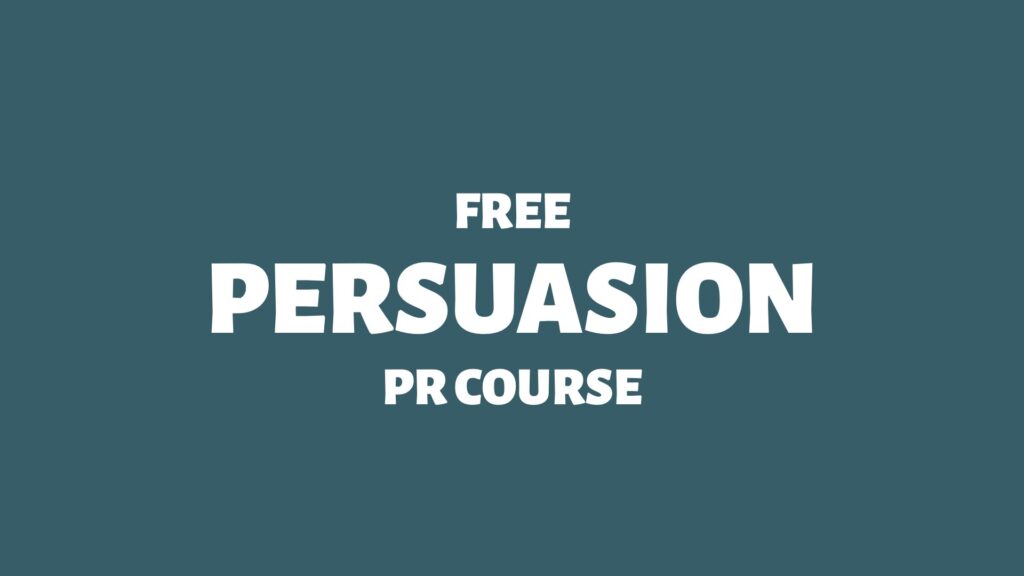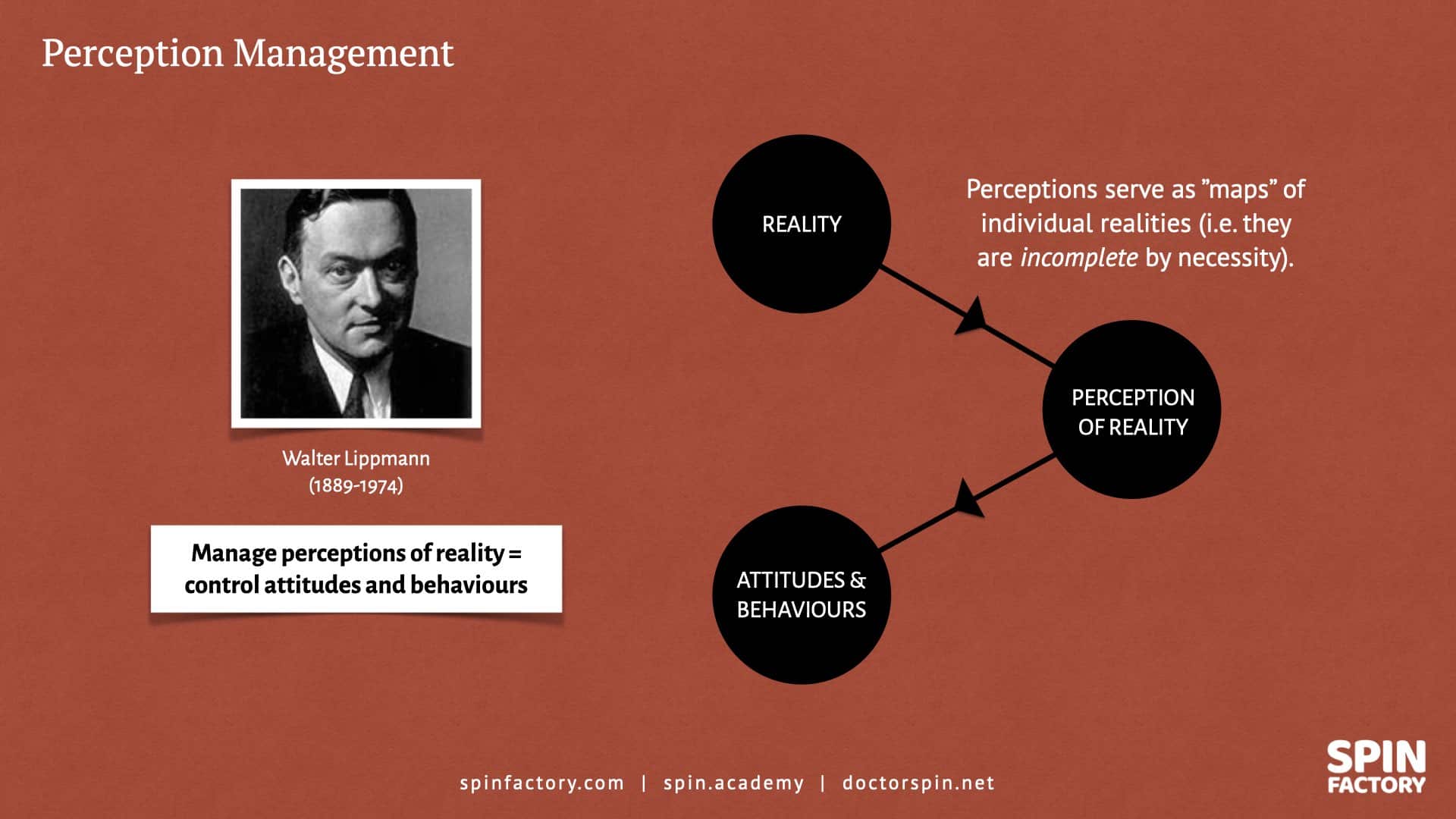Ethos, pathos, and logos play an important role in PR.
Some people need righteous arguments to be persuaded. Some need emotional ones. Others need logical arguments to come around.
But for most of us, a combination of the three is needed.
Ethos, pathos, and logos are three powerful modes of persuasion in public relations.
Here we go:
Ethos, Pathos, and Logos in Public Relations

Spin Academy | Online PR Courses
Ethos, Pathos, and Logos: Three Classical Modes of Persuasion
“Aristotle’s three modes of rhetorical persuasion are ethos, pathos, and logos, which are based on moral competence, emotional appeal, and reason.”
Source: Sino-US English Teaching 1Lin, W. (2019). Three Modes of Rhetorical Persuasion. Sino-US English Teaching. https://doi.org/10.17265/1539 – 8072⁄2019.03.003
Ethos, pathos, and logos are three modes of persuasion recognised since ancient Greece, and they play an essential role in public relations.
In PR, these three modes of persuasion are often combined to create compelling messages that resonate with the audience on multiple levels. 2Modes of persuasion. (2023, September 27). In Wikipedia. https://en.wikipedia.org/wiki/Modes_of_persuasion
By understanding and applying the principles of ethos, pathos, and logos, PR professionals can craft messages that resonate deeply with their audience, driving action and fostering lasting relationships.
Learn more: Ethos, Pathos, and Logos in Public Relations
💡 Subscribe and get a free ebook on how to get better PR ideas.

Thanks for reading. Please consider sharing my public relations blog with other communication and marketing professionals. If you have questions (or want to retain my PR services), please contact me at jerry@spinfactory.com.
PR Resource: Persuasion

Spin Academy | Online PR Courses
Doctor Spin’s PR School: Free Persuasion PR Course
Use this free Persuasion PR Course to elevate your public relations game with powerful insights. Drive impact and influence like never before.
“Since we cannot change reality, let us change the eyes which see reality.”
— Nikos Kazantzakis
Learn more: All Free PR Courses
💡 Subscribe and get a free ebook on how to get better PR ideas.
PR Resource: Amplification Hypothesis
Spin Academy | Online PR Courses
The Amplification Hypothesis
It’s common to find that counterarguments strengthen existing beliefs instead of weakening them.
The phenomenon is known as the amplification hypothesis, where displaying certainty about an attitude when talking with another person increases and hardens that attitude.
“Across experiments, it is demonstrated that increasing attitude certainty strengthens attitudes (e.g., increases their resistance to persuasion) when attitudes are univalent but weakens attitudes (e.g., decreases their resistance to persuasion) when attitudes are ambivalent. These results are consistent with the amplification hypothesis.“
Source: Journal of Personality and Social Psychology 3Clarkson, J. J., Tormala, Z. L., & Rucker, D. D. (2008). A new look at the consequences of attitude certainty: The amplification hypothesis. Journal of Personality and Social Psychology, … Continue reading
How does the amplification hypothesis work?
In a threatening situation or emergency, we resort to the primal (fastest) part of the brain and survival instincts (fight, flight and freeze). 4Surviving the Storm: Understanding the Nature of Attacks held at Animal Care Expo, 2011 in Orlando, FL.
Establishing common ground and exhibiting empathy demonstrates a genuine understanding of their perspective, fostering trust and openness to your ideas. Conversely, a strategic mismatch of attitudes can serve as a powerful countermeasure if your objective is to deflect persuasive attempts.
Persuade
To persuade, align your attitude with the target. Otherwise, you will only act to create resistance.
Provoke
To put off a persuader, mismatch their attitudes. When they are logical, be emotional, and vice versa.
Learn more: The Amplification Hypothesis: How To Counter Extreme Positions
💡 Subscribe and get a free ebook on how to get better PR ideas.
PR Resource: Perception Management
Spin Academy | Online PR Courses
Walter Lippmann: Public Opinion and Perception Management
No one is basing their attitudes and behaviours on reality; we’re basing them on our perceptions of reality.
Walter Lippmann (1889 – 1974) proposed that our perceptions of reality differ from the actual reality. The reality is too vast and too complex for anyone to process. 8Lippmann, Walter. 1960. Public Opinion (1922). New York: Macmillan.
The research on perception management is focused on how organisations can create a desired reputation:
“The OPM [Organizational Perception Management] field focuses on the range of activities that help organisations establish and/or maintain a desired reputation (Staw et al., 1983). More specifically, OPM research has primarily focused on two interrelated factors: (1) the timing and goals of perception management activities and (2) specific perception management tactics (Elsbach, 2006).”
Source: Organization Development Journal 9Hargis, M. & Watt, John. (2010). Organizational perception management: A framework to overcome crisis events. Organization Development Journal. 28. 73 – 87. … Continue reading
Today, our perceptions are heavily influenced by news media and influencers, algorithms, and social graphs. Therefore, perception management is more critical than ever before.
“We are all captives of the picture in our head — our belief that the world we have experienced is the world that really exists.”
— Walter Lippmann (1889 – 1974)
Learn more: Walter Lippmann: Public Opinion and Perception Management
💡 Subscribe and get a free ebook on how to get better PR ideas.
ANNOTATIONS
| 1 | Lin, W. (2019). Three Modes of Rhetorical Persuasion. Sino-US English Teaching. https://doi.org/10.17265/1539 – 8072⁄2019.03.003 |
|---|---|
| 2 | Modes of persuasion. (2023, September 27). In Wikipedia. https://en.wikipedia.org/wiki/Modes_of_persuasion |
| 3 | Clarkson, J. J., Tormala, Z. L., & Rucker, D. D. (2008). A new look at the consequences of attitude certainty: The amplification hypothesis. Journal of Personality and Social Psychology, 95(4), 810 – 825. https://doi.org/10.1037/a0013192 |
| 4 | Surviving the Storm: Understanding the Nature of Attacks held at Animal Care Expo, 2011 in Orlando, FL. |
| 5 | Silfwer, J. (2017, June 13). Conversion Theory — Disproportionate Minority Influence. Doctor Spin | The PR Blog. https://doctorspin.net/conversion-theory/ |
| 6 | Beck (1999): Homogenization, Dehumanization and Demonization. |
| 7 | Cognitive dissonance. (2023, November 20). In Wikipedia. https://en.wikipedia.org/wiki/Cognitive_dissonance |
| 8 | Lippmann, Walter. 1960. Public Opinion (1922). New York: Macmillan. |
| 9 | Hargis, M. & Watt, John. (2010). Organizational perception management: A framework to overcome crisis events. Organization Development Journal. 28. 73 – 87. https://www.researchgate.net/publication/288292596_Organizational_perception_management_A_framework_to_overcome_crisis_events |

























